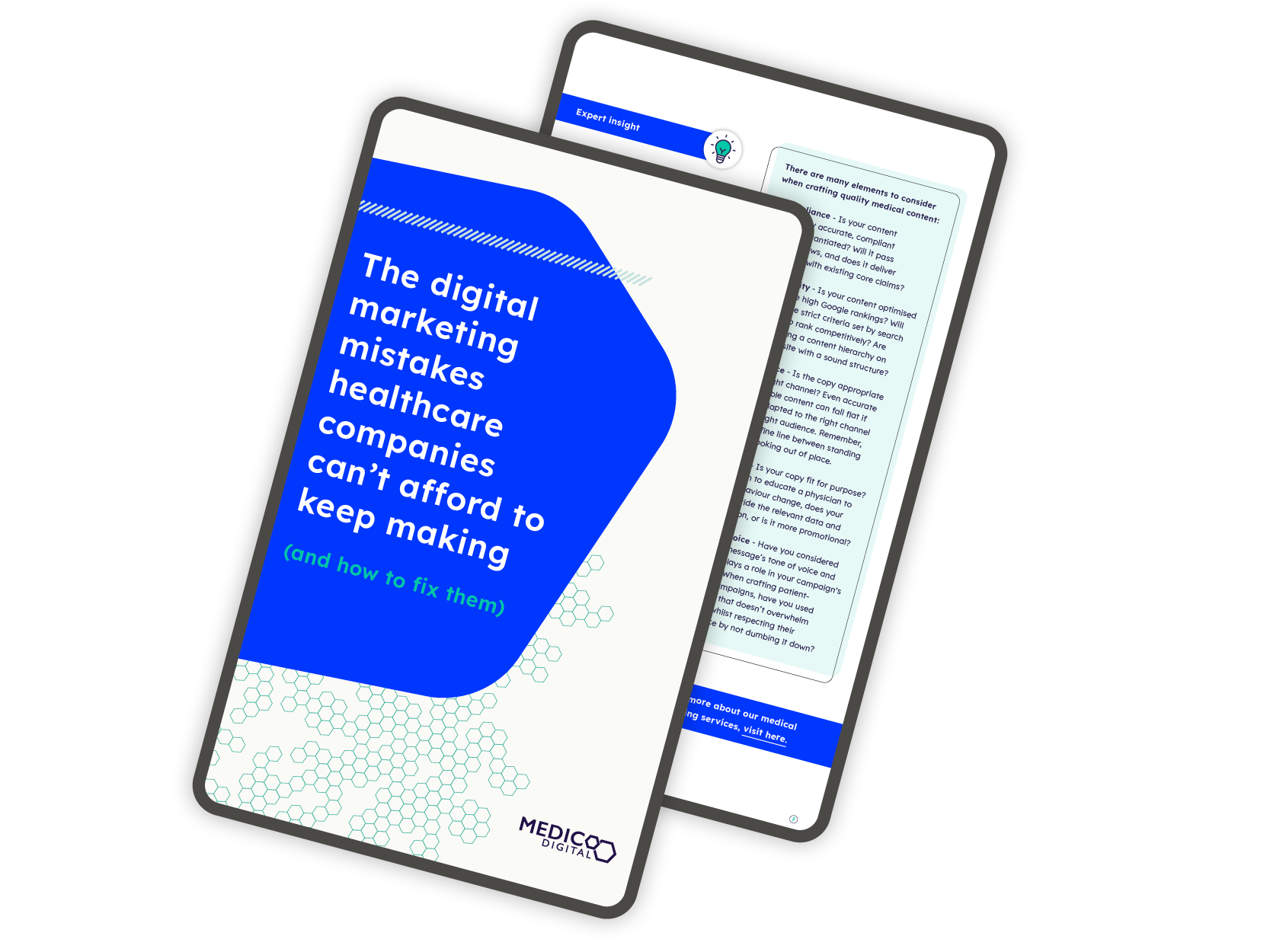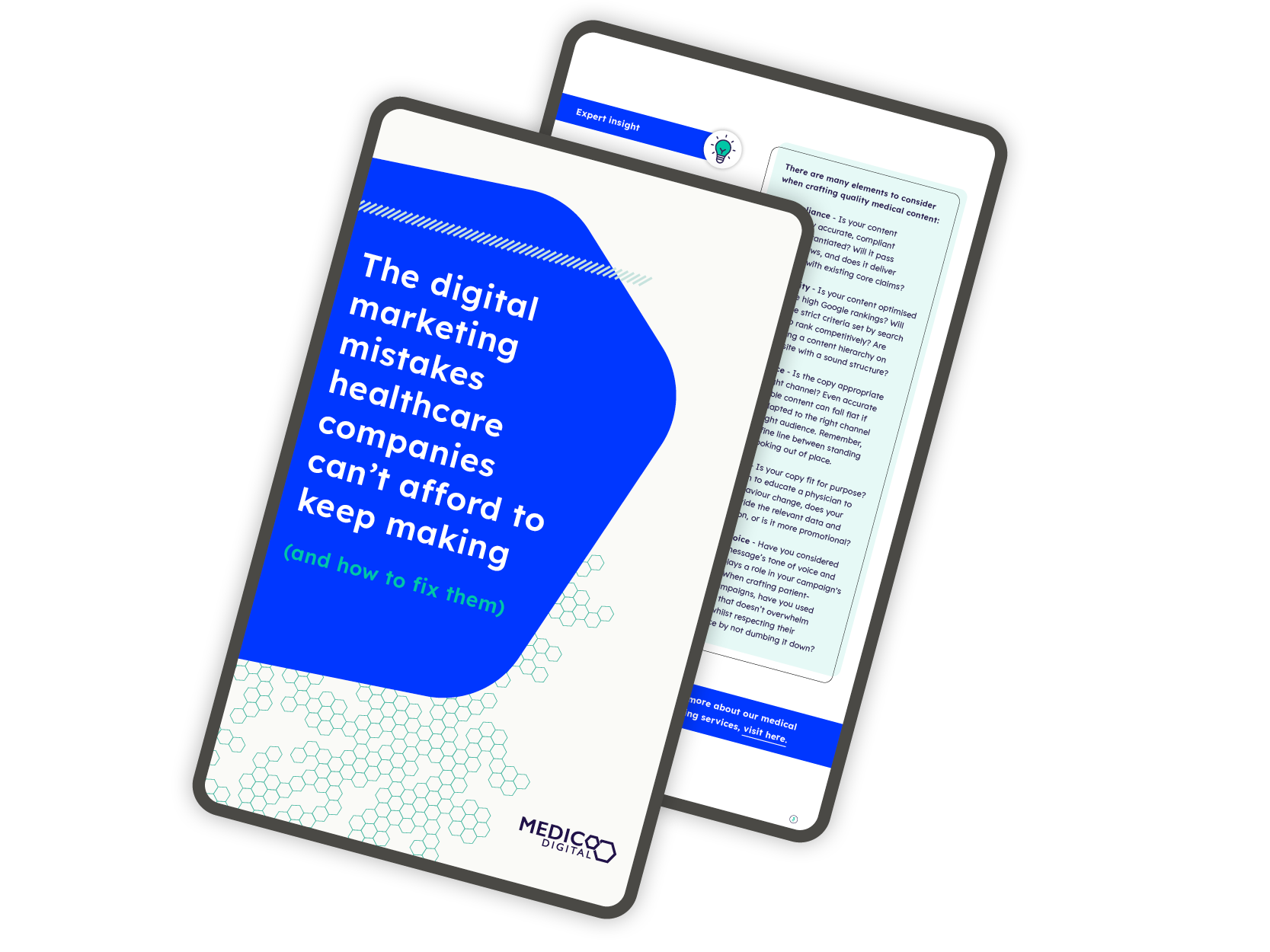Remember when typical marketing challenges for your healthcare business centred around perfecting a customer database for a direct mailing? Or speaking to a local newspaper to get an ad in production? Those days now seem remarkably simple within the context of modern marketing!
Just consider what healthcare marketers have to master today in order to successfully market a clinic: inbound and digital campaign development, marketing project management, app building, website development and content delivery, added-value white paper creation, SEO strategy and analysis, social media planning and engagement, lead nurturing, email marketing, database management, marketing automation, CRM system integration… even good old fashioned print production at times.
The pressure on in-house resources
This explosion in marketing disciplines makes it nigh on impossible to adequately resource a full team within a clinic. And there are definite risks in putting the full weight of responsibility onto one busy in-house marketer’s shoulders. The pace of change in digital fields alone challenges even the most capable general marketing manager. With marketing now covering a full spectrum of disciplines, it is unlikely that one individual can be an expert across the board. You may have found yourself a great social media manager but when it comes to web design, this individual may fall down, and understandably so.
No room for error
The risks in making mistakes with your marketing activity are also magnified in today’s real-time culture. Customers know that they can access every healthcare service from a range of very ready, ably self-promoting competitors. If your marketing isn’t up to scratch, then your lead generation immediately starts to dip and your losses can magnify at a terrifying pace.
The fact is, in modern healthcare marketing the primary focus needs to remain on lead generation to convert to revenue. And the tools and channels by which you can gain access to those leads in an increasingly noisy, competitive and a challenging market that is growing in diversity and complexity. Yes, your healthcare business may be able to generate large volumes of visitor, lead and prospect data – but if you don’t have the resource to do anything with it, your efforts are wasted. Additionally, the CEO or business owner is likely to want to see a clear ROI for marketing spend – something that a single marketer might struggle to implement. Think of it as trying to break down a large block of ice, one individual chiselling away at one side of the ice is going to take a lot longer than multiple chisel axes working across all angles of the ice.
The case for outsourcing
Working with a specialist healthcare marketing agency can fill in the gaps where your in-house marketing team struggles. A specialist marketing agency is already the experts in your field and is able to come in and apply the following to your healthcare business:
1) Strategic marketing planning and development specifically for your healthcare business, demonstrating clear knowledge of the sector, key competitors and the changing business landscape.
2) Development and delivery of a clear marketing assessment framework to demonstrate ROI
3) Delivery of effective inbound and outbound marketing tactics that are positioned expertly to have an edge over the competition.
Access to talent – when you need it
Additionally, the use of a specialist healthcare marketing agency will give you access to a broad and highly skilled talent base of marketers, rather than having to constantly seek out courses and training opportunities for your in-house resource (which equates to both cost and time), not to mention the fact that nobody can be an expert in everything. It also helps you to mitigate risks within your business by no longer having a key person dependency on a very limited in-house marketing function.
By using a specialist healthcare marketing agency, you will find the opportunity to build a beneficial, trusted and valuable relationship that translates into results for your business. Not only will it ultimately save you money, reduce business risk, provide you with an advanced level skill set, on demand – it will also enable you and your team to focus on what you do best; growing your successful healthcare business and converting those leads into sales!




 Download for FREE
Download for FREE 
